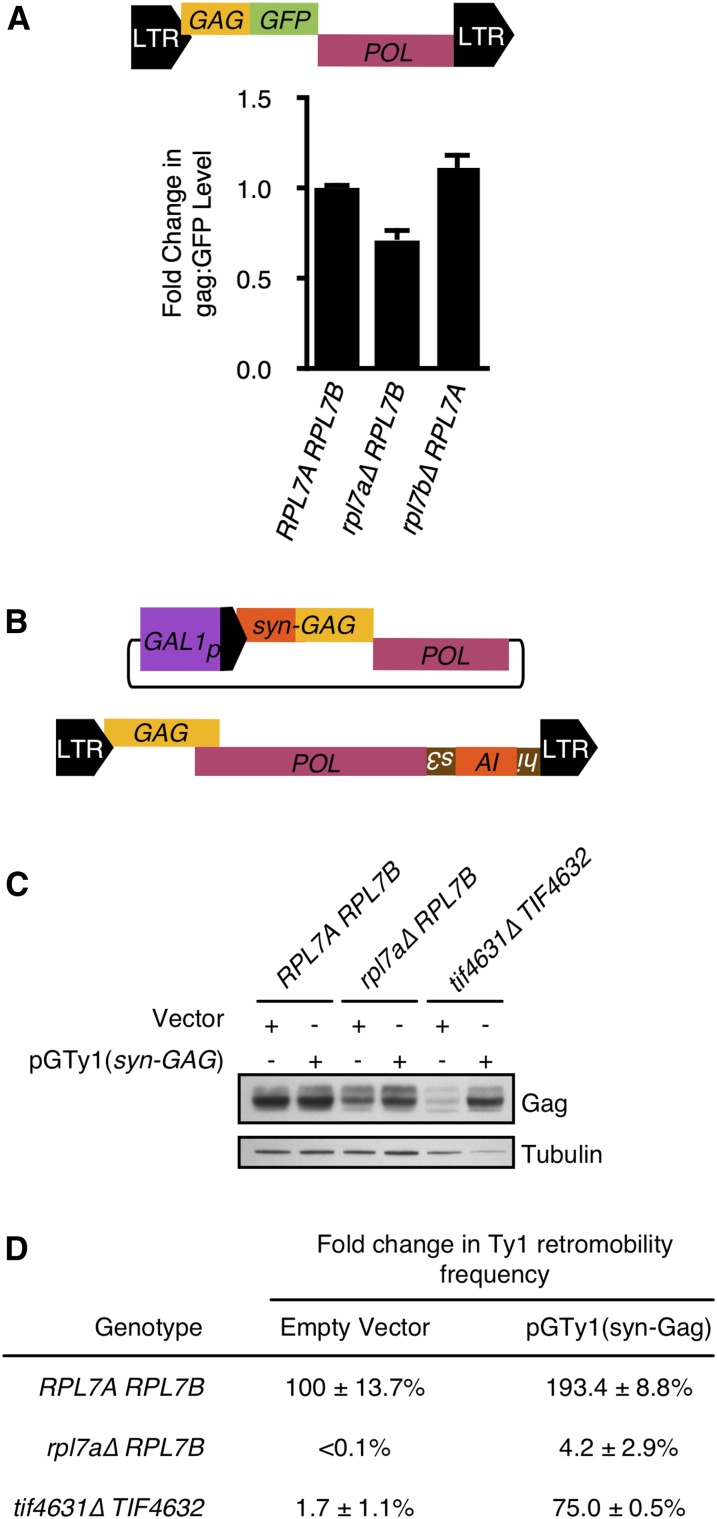Figure 6.
Diminished Ty1 retromobility in the rpl7a∆ RPL7B mutant is not a result of limiting Gag levels. (A) A schematic of the chromosomal Ty1(GAG:GFP)-3566 element is shown (top). The GFP ORF is fused at the C-terminal end of the GAG ORF after codon 401 in a chromosomal Ty1 element (Scholes et al. 2003). The mean fluorescence in 10,000–20,000 cells of each genotype, corrected for autofluorescence by subtracting the mean fluorescence in each congenic strain lacking Ty1(GAG:GFP)-3566 from the mean fluorescence in each strain harboring Ty1(GAG:GFP)-3566, was determined, and the value relative to that in the RPL7A RPL7B strain is reported (bottom panel). Error bars represent the SD of mean fluorescence calculated from two independent isolates of each genotype. (B) Schematic of plasmid pGTy1(syn-GAG), which carries a modified Ty1 element that lacks the 3′ LTR, and has numerous silent nucleotide substitutions in the GAG ORF. Ty1(syn-GAG) RNA is defective for retromobility in cis, but encodes wild-type Gag and Gag-Pol proteins required in trans for retromobility of the chromosomal Ty1his3AI element, which is diagrammed below plasmid pGTy1(syn-GAG). (C) Western blot analysis of RPL7A RPL7B, rpl7a∆ RPL7B, and tif4631∆ TIF4632 strains harboring either the vector pRS415 or plasmid pGTy1(syn-GAG) and grown in galactose medium at 20°. The membrane was probed with anti-VLP antisera to detect Ty1 Gag (top), or with an anti-α-Tubulin antibody to detect α-Tubulin (bottom) as a loading control. (D) Effect of pGTy1(syn-GAG) expression on Ty1his3AI retromobility in different genetic backgrounds. RPL7A RPL7B, rpl7a∆ RPL7B and tif4631∆ TIF4632 strains harboring a chromosomal Ty1his3AI element, and the vector (pRS415), or plasmid pGTy1(syn-GAG) grown in galactose-containing medium at 20° to induce expression of Ty1 proteins, and the Ty1 retromobility frequency was determined by measuring the frequency of His+ prototrophs formed. Error represents the SD of four biological replicates.

